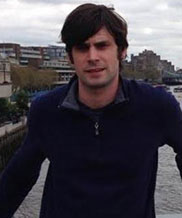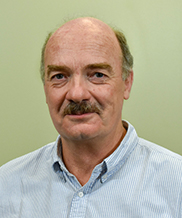Building Reciprocity: Curiosity and Learning in Humans and Machines
mediaX 2021 Virtual Conference
July 13, 14 and 15, 2021
Learning is rooted in what it means to be human. Exploration, curiosity, and feedback both fuel and guide development in humans, as well as in science and analytics. This is a lifelong endeavor for humans. Machines and systems, increasingly required to continue a trajectory of learning, rely on patterns, sequences, consistencies, feedback, and new instruction for their improvement. What similarities in curiosity and learning of humans and machines can be assumed or explored?
Over three days, mediaX thought leaders will share recent insights on important questions:
*In what ways can technological augmentation, simulation, or communication enhance the reciprocity between human and machine learning?
*Toward what reciprocal outcomes will we aspire for human and machine learning?
*How will the assessment of 21st century human learning be like or unlike the assessment of learning in automated systems?
Full Schedule: (All Times Pacific)
EMPOWERMENT – Tuesday, July 13, 8:00am-10:30am
“The Influence of Culture, Community and Context on Learning”
Industry Panel: “Designing Systems for Digital Instruction”
“Inclusive Innovation for Developing Relevant Learning Assessments”
DISCOVERY – Wednesday, July 14, 1:00pm-3:30pm
“A Taxonomy for Curiosity in Humans and AI”
“Limitations for Curiosity and Discovery in Open AI – GPT-3”
mediaX & NOVIM Awards
FEEDBACK – Thursday, July 15, 5:00pm-7:30pm
“Leaky Abstractions for Designing AI Experiences”
Industry Panel: “Teaching AIs to Provide Feedback to Humans”
Presenters

Nick Haber is an Assistant Professor at the Stanford Graduate School of Education, and by courtesy, Computer Science. After receiving his PhD in mathematics on Partial Differential Equation theory, he worked on Sension, a company that applied computer vision to online education. He then co-founded the Autism Glass Project at Stanford, a research effort that employs wearable technology and computer vision in a tool for children with autism. Aside from such work on learning and therapeutic tools, he and his research group develop artificial intelligence systems meant to mimic and model the ways people learn early in life, exploring their environments through play, social interaction, and curiosity.

David Evans, a Stanford Distinguished Visiting Scholar, is the President of David A. Evans LLC. He was the founder, president, CEO and chief scientist of JustSystems Evans Research, Inc., and also a chief scientist and director for JustSystems Corp. in Japan. Dr. Evans developed the CLARIT system, which pioneered the use of NLP-based language analysis to support automatic text indexing, retrieval, filtering, categorization, summarization, extraction, and information organization (all within a single process). Today, CLARIT is the core technology in JustSystems’s ConceptBase product and has become the leading enterprise knowledge management software suite in Japan (with over 50% market share).

Peter Norvig, a Stanford Distinguished Visiting Scholar, is a Director of Research at Google Inc; previously he directed Google’s core search algorithms group. He is co-author of Artificial Intelligence: A Modern Approach, the leading textbook in the field, and co-teacher of an Artificial Intelligence class that signed up 160,000 students, helping to kick off the current round of massive open online classes. He is a fellow of the AAAI, ACM, California Academy of Science and American Academy of Arts & Sciences.

Ed Hovy is a research professor at the Language Technologies Institute in the School of Computer Science at Carnegie Mellon University. Starting in 2020 he served a term as Program Manager in DARPA’s Information Innovation Office (I2O), where he managed programs in Natural Language Technology and Data Analytics totaling over $30M per year. His research focuses on computational semantics of language and addresses various areas in Natural Language Processing and Data Analytics, including in-depth machine reading of text, information extraction, automated text summarization, question answering, the semi-automated construction of large lexicons and ontologies, and machine translation. In early 2021 his Google h-index was 93, with over 48,000 citations.